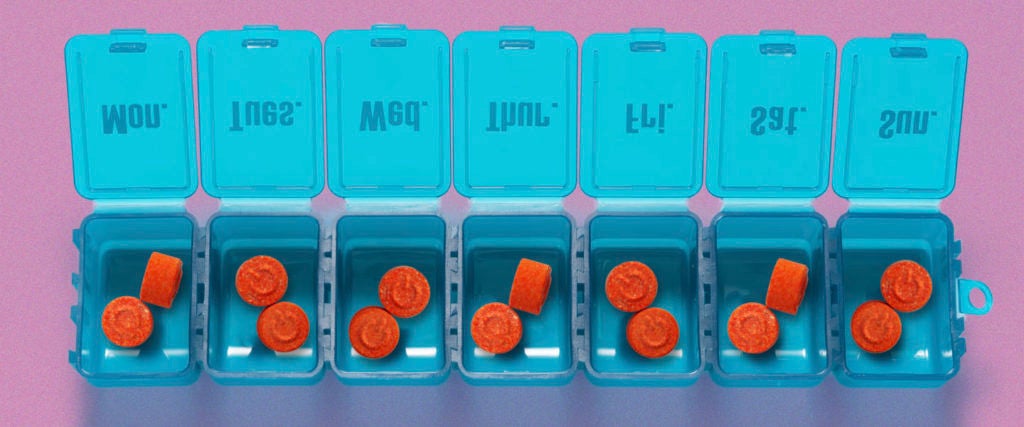Self-care is all about doing something you love every day, but what if that thing happens to be rolling on molly? Is there a frequency at which you can enjoy MDMA even somewhat safely?
“There’s no easy answer,” says Adam Klein, senior scientist at Gilgamesh Pharmaceuticals, a company developing novel psychedelics, and volunteer at DanceSafe, a harm-reduction organization. “I’m sure there are many who’d tell you that no use of MDMA is safe.”
Klein says they’d likely bring up studies showing memory deficits in molly users. There are also trials that suggest daily exposure to MDMA can damage your serotonin transporters (SERTs), which can lead to depression, anxiety and even suicidal tendencies. “However,” Klein continues, “many of the MDMA users in these studies were taking very large amounts of the drug, taking it in combination with other drugs and/or taking ecstasy pills that may contain other substances entirely. Thus, it’s impossible to draw any conclusions.” (For tips on dosing and testing for purity, head here.)
Despite an official, scientifically-backed answer to our question, there are some conventional guidelines floating around out there for how frequently a person can (or should) reasonably take molly. “The generally-accepted rule in the community is to not take MDMA more often than once every three months,” Klein tells me. “However, there’s no scientific rationale for this three-month rule.” He says it came from psychedelic pioneer Ann Shulgin, “who proposed it as a dosing frequency that was unlikely to cause a loss of magic.”
There have been some further speculations on this theory by the likes of MDMA researcher Matthew Baggott, and the general consensus is that the more molly you take, the less it will affect you — even well down the road.
We might also be able to pull some hints from recent trials performed by the Multidisciplinary Association for Psychedelic Studies, also known as MAPS. In the latest one, some patients received three doses of MDMA in a span of 18 weeks. “Clearly, this means that the regulatory bodies overseeing these studies feel it’s safe to dose patients multiple times over a few weeks in a therapeutic setting,” Klein says.
But the key words there are “therapeutic setting.” Obviously, MAPS has access to more precise testing and dosing tools than we do. “This is quite different from recreational use, where users will often take larger amounts and likely re-dose multiple times throughout the night,” says Klein.
One of the most important things to keep in mind is that molly is by no means safe. As Klein emphasizes, “MDMA can definitely cause long-term problems, including neurotoxicity, when abused or taken in an unsafe environment.” Sometimes you might not even realize what’s unsafe: To prove just how fickle molly can be, for whatever reason, rodent studies show that higher ambient room temperatures make it more neurotoxic.
To put yourself in the best spot you can when taking molly (which is still a risky one, mind you), Klein says you might as well abide by Shulgin’s three-month rule. While you’re at it, test your MDMA, stick with low doses (70 to 125 milligrams), limit yourself to one re-dose per night of half the original amount, don’t mix it with other drugs and drink plenty of water.
If you can manage all that, you’re a self-care (and harm-reduction) wizard.

